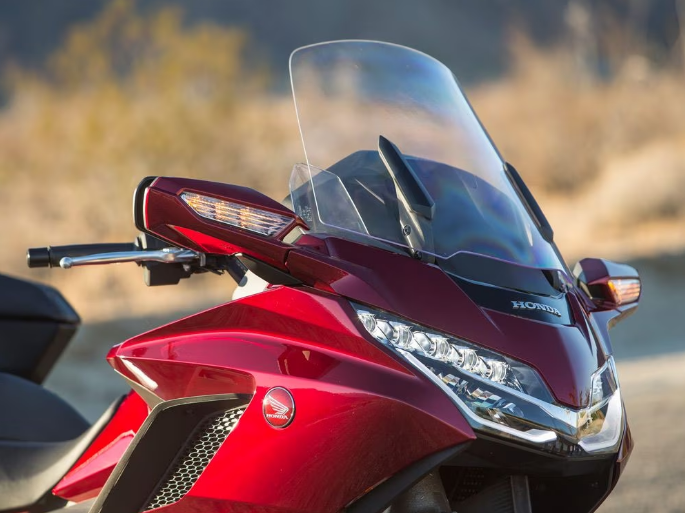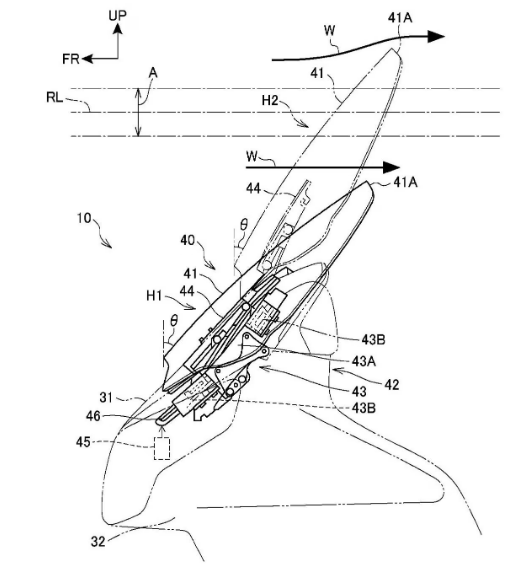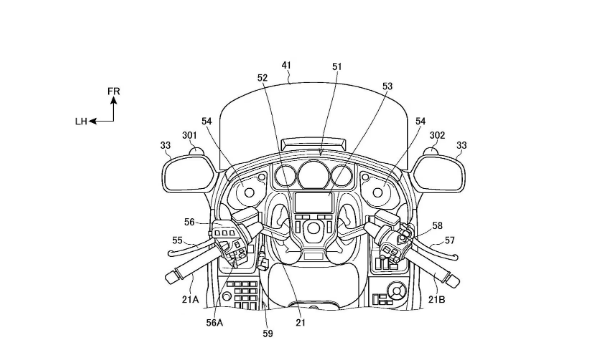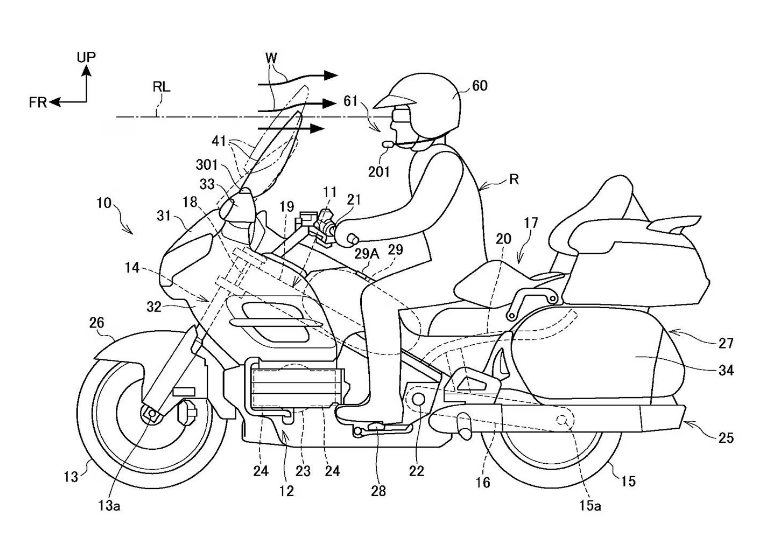The Honda Gold Wing has been a platform for futuristic technology for decades, and now the company is working on a self-adjusting windshield aimed at making it more comfortable and efficient.
It may seem unnecessarily decadent to turn windshield adjustment into a computer-controlled process, including microphones and even cameras to find the right height and angle for each scenario, but there is a method behind this idea. Honda is working on a growing number of voice-controlled systems for future versions of the Wing, and reducing wind noise to ensure the driver’s voice is clearly audible will be a key element to its success.

The patent application for Honda’s automatic adjusting windshield, filed in Japan, shows that the components include a microphone mounted on the driver’s helmet (although other patents also show a microphone mounted on the tank for voice control systems), along with a pair of cameras placed on top of the mirrors and facing the driver’s face. These, along with a control switch mounted on the handlebar, transmit their information to an ECU that controls the windshield through the same type of electronic adjustment system that was introduced on the Gold Wing in 2018.


In its simplest form, the microphone captures wind noise and, together with information about the speed of the motorcycle, increases or decreases the windshield to reduce noise and turbulence. However, this automation introduces the need for a camera system. Honda acknowledges that in some positions, the electric windshield will be a distraction for the rider, particularly if the top edge of the screen is directly in their line of sight. Since riders come in various shapes and sizes, the patent explains that cameras are used to monitor the position of the rider’s eyes, using that information to define a height zone where the windshield does not stop, opting for a position above or below that zone that is closest to the ideal in terms of noise reduction.








